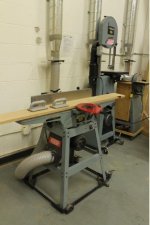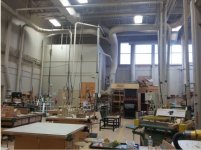Since retiring last year I have spent lots more time in the shop. Over the same time I have steadily increased my usage of rough sawn lumber. One of the outcomes as you might guess is producing a great deal more dust. I plan to make some updates to improve dust extraction after I finish a couple projects. I work like some input.
I have a JCDC-2 (230V / 2 HP) dust collector. To date I have a couple flexible hoses and roll the dust collector around the shop as needed. I want to use fixed tubes, blast gates to direct air flow, drops for my table saw, planner, jointer, band saw, router table and CNC. This will allow me to make the dust collector location permanent. Once in its permanent location, I plan to enclose it to reduce noise.
For those of you that have fixed dust collection tubes, gates, etc.:
1. What size and type of tubes did you buy? What blast gates and equipment to connect the individual machine drops did you use? Why did you choose what you did?
2. What would you suggest as the longest run my 2HP collector can support?
3. Was there any YouTube videos, forums, or information sources you used which were especially helpful?
4. How does your design handle static electricity?
As I have started my research I have reviewed lots of options with many different price points. Figured would be good to ask for advice from those that have been down this road before me.
For mobile dust extractors I have a CT MIDI (dedicated to my Kapex) and a CT 36. I am planning to switch both to the reusable long life bags to round out my improved dust collection.
I have a JCDC-2 (230V / 2 HP) dust collector. To date I have a couple flexible hoses and roll the dust collector around the shop as needed. I want to use fixed tubes, blast gates to direct air flow, drops for my table saw, planner, jointer, band saw, router table and CNC. This will allow me to make the dust collector location permanent. Once in its permanent location, I plan to enclose it to reduce noise.
For those of you that have fixed dust collection tubes, gates, etc.:
1. What size and type of tubes did you buy? What blast gates and equipment to connect the individual machine drops did you use? Why did you choose what you did?
2. What would you suggest as the longest run my 2HP collector can support?
3. Was there any YouTube videos, forums, or information sources you used which were especially helpful?
4. How does your design handle static electricity?
As I have started my research I have reviewed lots of options with many different price points. Figured would be good to ask for advice from those that have been down this road before me.
For mobile dust extractors I have a CT MIDI (dedicated to my Kapex) and a CT 36. I am planning to switch both to the reusable long life bags to round out my improved dust collection.


